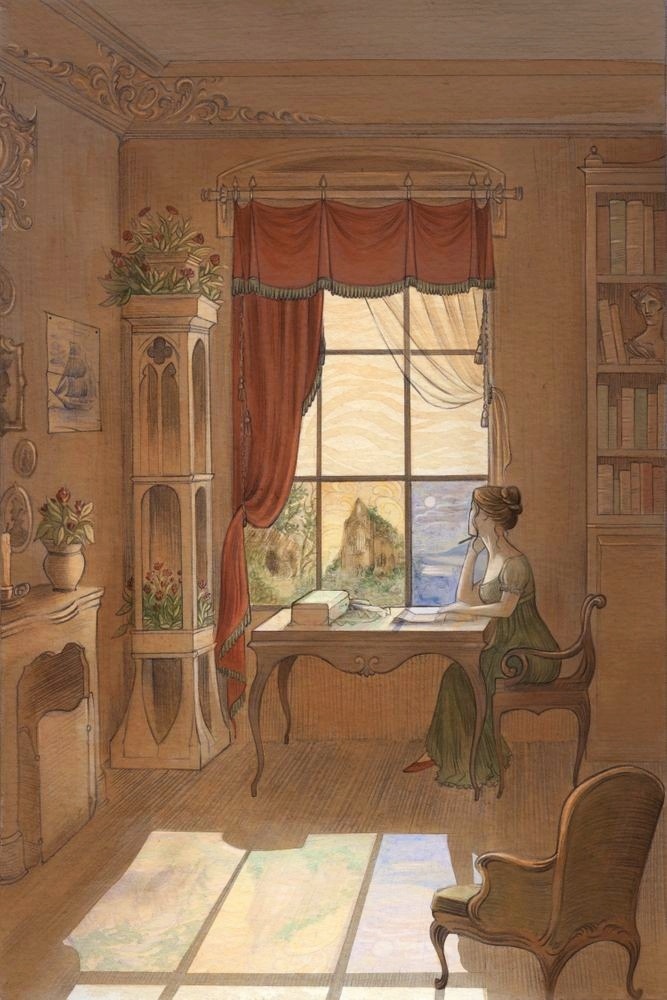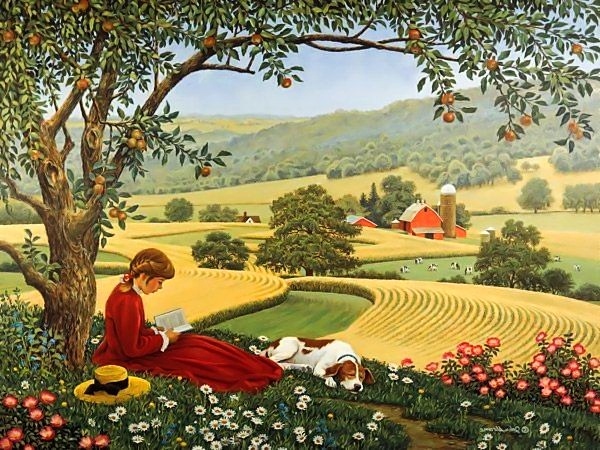

The daughter of a Hampshire clergyman, Austen was born at Steventon Parsonage on 16 December 1775. The seventh of eight children, she grew up in a happy and close-knit family, and the careers and families of her brothers (two clergymen, two admirals, and one adopted by wealthy relations) inform her stories. She started writing at a young age, and her juvenilia includes dramatic sketches, spoofs and poems
Ever fascinated by the world of stories, Austen began to write in bound notebooks. In the 1790s, during her adolescence, she started to craft her own novels and wrote Love and Freindship, a parody of romantic fiction organized as a series of love letters. Using that framework, she unveiled her wit and dislike of sensibility, or romantic hysteria, a distinct perspective that would eventually characterize much of her later writing.

Austen’s works of romantic fiction, set among the landed gentry, earned her a place as one of the most widely read writers in English literature, her realism and biting social commentary cementing her historical importance among scholars and critics.
Rich in comedy, romance, wit and satire, Jane Austen’s six novels are also pin-sharp reflections of her social and geographical milieu in and around Hampshire, Bath and Dorset.

Jane Austen’s (1775–1817) distinctive literary style relies on a combination of parody, burlesque, irony, free indirect speech and a degree of realism, Austen’s accomplishments and legacy can be seen in her six major novels—Sense and Sensibility, Pride and Prejudice, Mansfield Park, Emma, Northanger Abbey, and Persuasion—Austen created the comedy of manners of middle-class life in the England of her time, revealing the possibilities of “domestic” literature.
Jane Austen wrote about unremarkable people in unremarkable situations of everyday life, and yet she shaped such material into remarkable works of art. The economy, precision, and wit of her prose style; the shrewd, amused sympathy expressed toward her characters; and the skillfulness of her characterization and storytelling continue to enchant readers. Austen’s characters are continually watching, judging and gossiping about others and, in turn, are watched, judged and gossiped about. She fills her novels with ordinary people, places and events, in stark contrast to other novels of the time. Professor Kathryn Sutherland considers the function of social realism in her work. Rich in comedy, romance, wit and satire, Jane Austen’s six novels are also pin-sharp reflections of her social and geographical milieu in and around Hampshire, Bath and Dorset.


In 1816, Jane began to suffer from ill-health, probably due to Addison’s disease. She travelled to Winchester to receive treatment, and died there on 18 July 1817.




